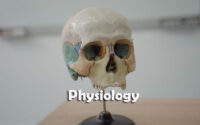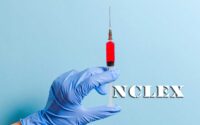Urology Questions and Answers
Urology Questions and Answers Papers are available on this page. Aspirants can get Urology Questions and Answers Papers on our site. Applicants can find Urology Questions and Answers Papers on our site. Candidates who are in search for Urology Questions and Answers Papers can get them here. We provided valuable information regarding Urology Questions and Answers Solved Papers for Exam. So Interested people can use these Renal Transplantation Questions and Answers Papers in their preparation. We have also given solutions for Urology Questions and Answers Papers.

Questions and Answers Papers on Urology
1. Expanded criteria for donor kidney, which is true?
(1) Allocated according to multiple parameters
(2) Offered to those who agree to accept them
(3) Kidneys have similar graft survival to others
(4) 2 year graft survival is 90%
2. Ideal cold ischemia time for kidney transplantation is –
(1) 16 hrs.
(2) 18 hrs.
(3) 20 hrs.
(4) Less than 12 hrs.
3. Acute nephritic syndrome include all, EXCEPT –
(1) Post streptococcal glomerulonephritis
(2) Lupus nephritis
(3) Alport syndrome
(4) IgA nephropathy
4. Following is true statement for deceased donor optimization-
(1) Plasma sodium should be above 160 mmol/Lit
(2) Urine output should be 0.5-3ml/kg/hr
(3) Euglycemia < 120mg/dL
(4) Hypothermia
5. Donor renal vein is sewn to which vessel?
(1) Internal iliac vein
(2) External iliac vein
(3) Ether of above
(4) Inferior vena cava
6. Which is less common in CKD?
(1) Hyperkalemia
(2) Hyperphosphatemia
(3) Hypocalcemia
(4) Hypokalemia
7. Which of the following has been associated with higher incidences of mortality in living donor nephrectomy?
(1) Open donor nephrectomy
(2) Ligation of the renal vein with Endo-GIA stapling device
(3) Legation of renal artery with single Hem—o—lok clip
(4) Retroperitoneoscopic donor nephrectomy
8. Gold standard diagnosis of transplant renal artery stenosis is –
(1) USG Doppler
(2) Angiography
(3) Re-exploration
(4) MRI
9. In small children (wt.< 20kg) which is true statement for renal transplant?
(1) Kidney placement as usual extraperitoneal pelvic location
(2) Kidney placement intra peritoneal with vascular anastomosis with Infrarenal IVC and aorta
(3) Vascular anastomosis to common iliac artery and vein
(4) Native nephrectomy done and kidney transplanted orthotopically
10. Most common type of peritransplant collection is –
(1) Haematoma
(2) Urinoma
(3) Lymphocele
(4) Abscess
11. Most common technique for ureteric anastomosis is –
(1) Lich Gregoir
(2) Cohen
(3) Paquin
(4) Ledbetter-Politano
12. What is treatment of choice in proteinuria with hypertension?
(1) Angiotensin receptor blockers
(2) Calcium channel blockers
(3) β blocker
(4) α blocker
13. Delayed consequences of AKI are all, EXCEPT –
(1) Recurrent AKI
(2) HTN
(3) DM type 2
(4) Incident ESRD
14. Warm ischemia is because of –
(1) Surgical trauma
(2) Failure of oxidative phosphorylation
(3) Cold irrigation trauma
(4) None of the above
15. All are true, EXCEPT –
(1) Functionalized augmentation is preferable to dry augmentation.
(2) Urothelium lined augmentation is best.
(3) Augmentation is indicated when there is decreased bladder capacity.
(4) Augmented bladder do not require CIC.
16. The expanded criteria of donor kidney is –
(1) Kidney from deceased donor older than 60 year
(2) Deceased donor aged 50-59 years with two additional risk factors
(3) Allocated according to waiting time alone
(4) All of the above
17. Most common hereditary renal disorder leading to ESRD is –
(1) Autosomal recessive polycystic kidney
(2) Hypo plastic kidneys
(3) Medullary cystic disease
(4) ADPKD
18. ACE inhibitors are indicated in CKD patients to –
(1) Improve renal function
(2) Improve cardiac function
(3) To prevent progressive kidney disease
(4) To control blood lipids
19. Which surgical technique is being used today for pancreas kidney transplant?
(1) Pancreas and duodenum venous anastomose iliac vein and duodenoenterostomy for exocrine drainage
(2) Pancreas and duodenum venous anastomosis to iliac vein and duodenocholecystostomy for exocrine drainage
(3) Whole pancreas duodenal transplantation with portal venous drainage and duodenojejunostomy for exocrine drainage
(4) None of the above
20. Rapidly rising cause of chronic renal failure in India is –
(1) Hypertension
(2) Renal infections
(3) Diabetes insipidus
(4) Diabetes mellitus
| Question and Answer | Objective |
| MCQs | Sample Papers |
| Interview Pattern | Model Papers |
| Nursing |
21. Alli are true, EXCEPT –
(1) Lateral lymphoceles are easy to access laparoscopically.
(2) Lymphocele are best treated by unroofing into peritoneal cavity.
(3) Lymph has creatinine similar to that of blood.
(4) Lymph has creatinine less than that in urine.
22. What is the strongest risk factor for development of stone disease in transplanted kidney?
(1) Non-absorbable sutures in urinary tract
(2) Retained stent
(3) Persistent UTI
(4) Female gender with previous history of stone disease
23. All except one is contraindication for the use of desirable side for renal transplant –
(1) Previous venous thrombosis of one leg of that side
(2) History of prolong venous cannulation in one leg of that side
(3) Previous abdominal incision on that side
(4) That side lower limb is fractured
24. Prior to renal transplant following are the indications of UDS, EXCEPT –
(1) Patients with history of lower urinary tract symptoms
(2) De functionalized bladder
(3) Patient with history of kidney stone disease
(4) Complex urological history
25. During organ harvesting following statement is true in case of deceased donation –
(1) Liver, pancreas to be harvested in last
(2) Kidney to be harvested in last
(3) Kidney to be harvested first as surgeon wants to prevent it for ischemia
(4) Right kidney to be harvested first then liver, pancreas and then left kidney
26. What is divided in last during donor nephrectomy?
(1) Ureter
(2) Renal artery
(3) Gonadal vein
(4) Renal vein
27. Which of the following statement about post transplantation malignancy is correct?
(1) Certain immunosuppressive agents increase the incidence of malignancy in transplant recipient, whereas others do not.
(2) Those malignancies most commonly seen in the general populations (breast, colon) are substantially more common in transplant recipients.
(3) Lymphoproliferative states and B-lymphomas are associated with Epstein — Barr virus.
(4) None of the above
28. True about Pharmacokinetics of calcineurin inhibitors –
(1) Tacrolimus levels can decrease by 25% with discontinuation of steroids
(2) Diltiazem and ketoconazole helps in achieving therapeutic levels
(3) Sevelamer may increase levels
(4) Bioavailability of oral cyclosporine is 70%
29. Points which preclude donation are –
(1) Proteinuria > 250mg/day
(2) Total GFR < 80 mi/minute
(3) Current pregnancy
(4) All of the above
30. During cold ischemia and/or warm ischemia following is pathophysiology of cell damage, EXCEPT-
(1) Cell swelling due to poor function of Na+/K+ ATPase
(2) Acidosis due to anaerobic metabolism
(3) Reactive free radicals
(4) Improperly functioning of Mg++ pump
31. Which of the following interferes with the tubular secretion of creatinine and can cause an increase in serum creatinine levels?
(1) Azathioprine
(2) Trimethoprim
(3) Mycophenolate mofetil
(4) Basiliximab
32. Advantages of Laparoscopic donor nephrectomy over open donor nephrectomy are all, EXCEPT –
(1) Improved donor satisfaction
(2) Less donor morbidity
(3) Improved graft outcomes
(4) it increases living donation rate
33. Reported mortality of donor nephrectomy is –
(1) 0.0001%
(2) 0.03%
(3) 0.1%
(4) 1%
34. Renal blood flow normally drains –
(1) 30% of cardiac output
(2) 20% of cardiac output
(3) 40% of cardiac output
(4) 35% of cardiac output
35. According to the Banff working classification of Renal allograft Pathology, which of the following patterns would be recognized as acute antibody-mediated rejection?
(1) Circulating donor-antibodies, severe tubulitis, interstitial inflammation
(2) Peritubular capillary C4d deposition, peritubular capillaritis, interstitial inflammation
(3) Circulating donor-specific antibodies, mild-moderate large vessel intimal arteritis, moderate interstitial fibrosis
(4) Peritubular capillary C4d deposition, circulating donor-specific antibodies, peritubular capillaritis
36. Treatment of choice for primary oxalosis causing ESRD –
(1) Renal treatment
(2) Liver treatment
(3) Renal and liver treatment
(4) None of the above
37. Regarding allograft nephrectomy which of the following statement is true?
(1) Allograft nephrectomy is indicated for all failed kidney transplant.
(2) Allograft nephrectomy is a relatively simple procedure and can be performed without significant prior experience.
(3) Levels of circulating anti HLA antibody may be reduced by allograft nephrectomy if the transplant fails with in one year.
(4) Allograft nephrectomy is mandatory if candidate for second renal transplant.
38. Not true about peritoneal dialysis –
(1) In PD, 1.5-3lit. of dextrose solution is infused in peritoneal cavity and allow to dwell for at least 2-4 hrs.
(2) In initial PD it is done along with HD for better outcome.
(3) PD may be carried out as CAPD, CCPD or combination.
(4) PD solution are available in volume typically.
39. Most common causes of death following kidney transplant in order are –
(1) heart disease, sepsis and stroke
(2) kidney failure, sepsis and cancer
(3) sepsis, cancer and heart disease
(4) heart disease, cancer and stroke
40. <A 40-year-old woman is evaluated for kidney donation all pertinent tests are negative except for microscopic hematuria. She has menstrual cycle 15 days ago. Urine sediment shows six dysmorphic RBCs on phase constant microscopy. Which one of the following test you recommend for this donor?
(1) Renal Biopsy
(2) CT scan of kidneys
(3) Malignancy workup
(4) Workup for renal stones
41. A 54-year-old male with ESRD due to type 2 DM has been on haemodialysis for 2 years and is referred for transplant evaluation. Which of the following is an absolute contraindication to renal transplantation?
(1) Gleason 3+3 prostate cancer treated by radical prostatectomy 1 year ago
(2) Recent development of a gangrenous toe
(3) A T1a NOMx Fuhrman grade 2 RCC treated by radical nephrectomy 1 year ago
(4) History of below knee amputation 4 years ago now moving with prosthesis
42. A 30-year-old man with type 1 diabetes and creatinine of 4.1 mg/dl (eGFR 18ml/min) ask you about transplant options. Which one of the following is considered the best option for this patient?
(1) Living — related kidney transplant alone
(2) Cadaveric transplant alone
(3) Simultaneous pancreas and kidney transplant
(4) Pancreas after kidney transplant
43. False about tacrolimus is –
(1) Macrolide antibiotic
(2) Isolated from Streptomyces-Tsukubaensis
(3) They are myelosuppressive
(4) Previously called FK-506
44. Kidney transplant survival rates are poorest for which of the following donor categories?
(1) Sibling
(2) Parent
(3) Spouse
(4) Expanded criteria deceased
45. Which of the following is true regarding urologic complications after renal transplantation?
(1) Urologic complications are less common than vascular complications
(2) Urologic complications invariably manifest early
(3) Re-exploration and surgical reconstruction are always required for urine leaks
(4) Transplant ureteral stenosis is associated with BK polyoma virus infection
46. Probable risk factors in developing malignancy in transplanted patients are all, EXCEPT-
(1) Immunosuppression
(2) Infection with organic virus
(3) Loss of “T’ suppressor function
(4) Presence of diabetes mellitus
47. Most common preservative for all abdominal organs is –
(1) UW Solution
(2) Saline
(3) Bouins fluid
(4) Liquid nitrogen
48. Following are preservative solutions used for transporting harvested kidney, EXCEPT –
(1) University of Wisconsin solution
(2) Celsior solution
(3) Histidine – Tryptophan – Ketoglutarate solution
(4) Histidine – Ringer lactate – Citrate solution
49. False about living donor evaluation process –
(1) Undergoing evaluation is a commitment to donate
(2) Physician may turn me down as donor and will be informed why
(3) Information obtained is confidential
(4) I can stop at any time



